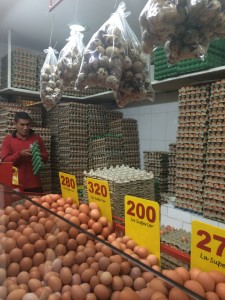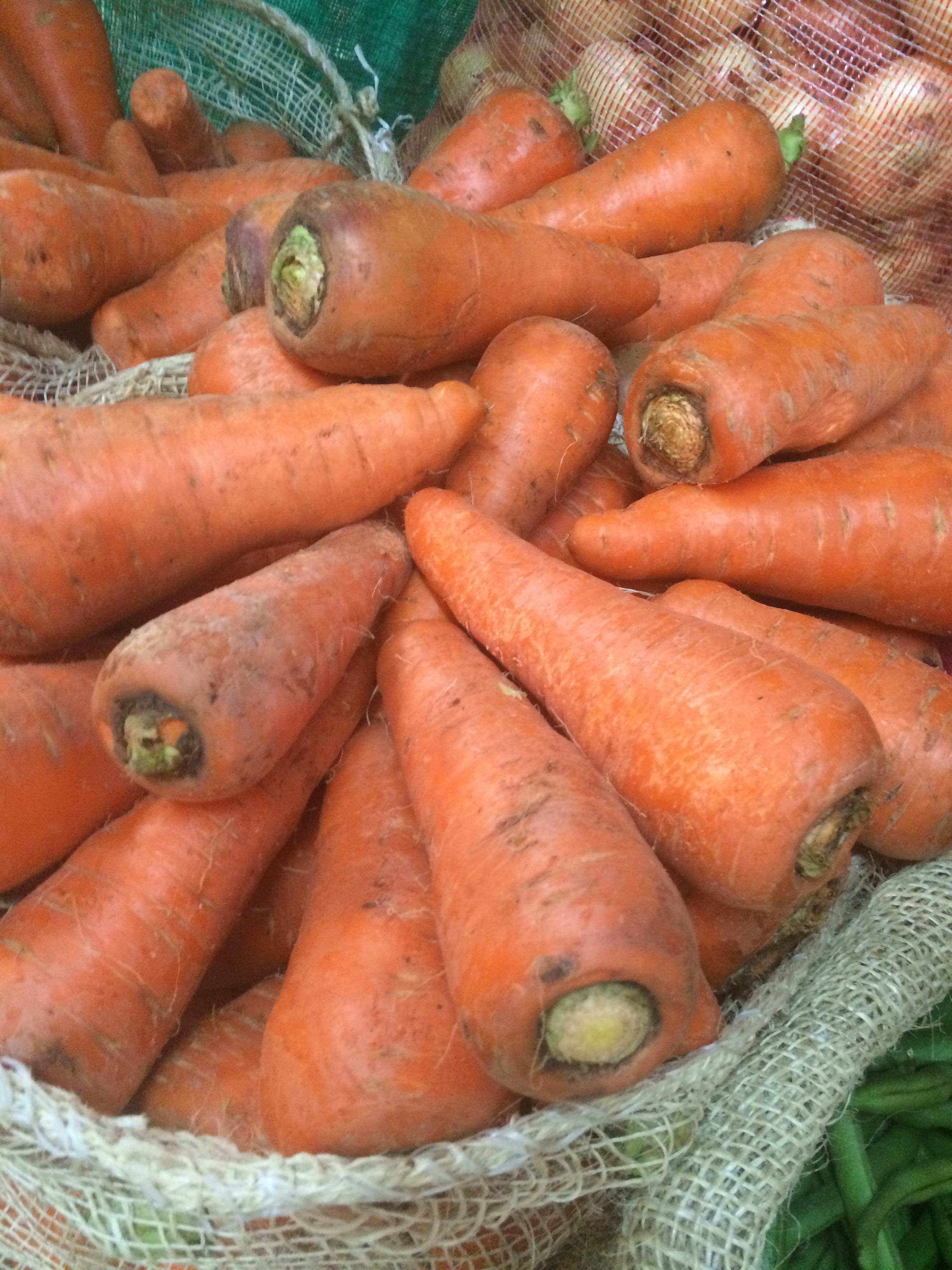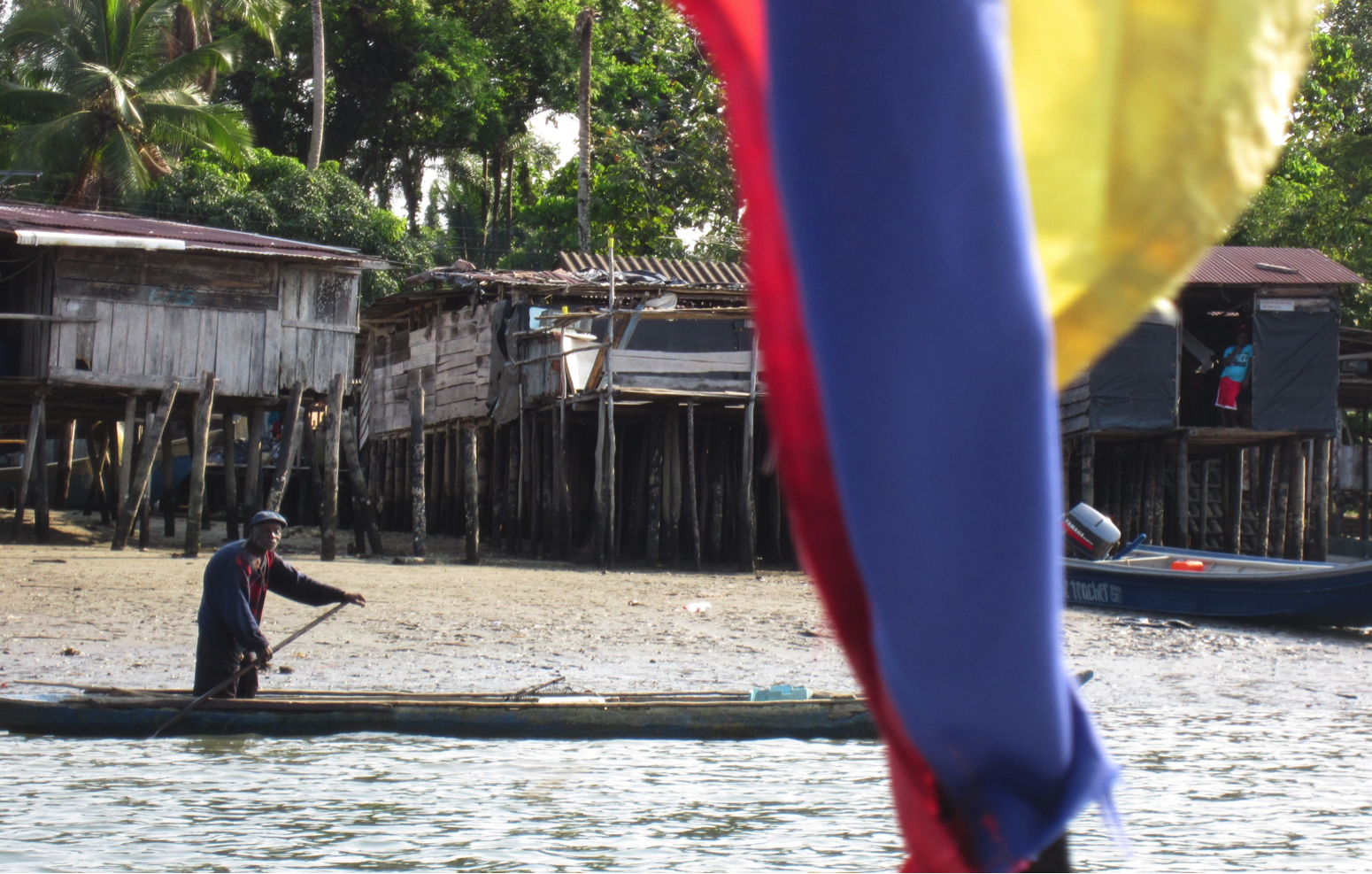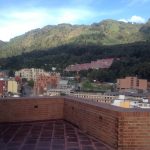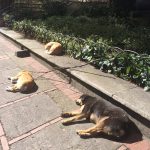Does that sound salacious? Well they are some enormous honking carrots:
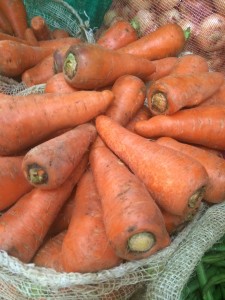
How about a foodie tour of Bogota to celebrate my new author website? This is from February, when Ali and Shane came for a great visit. Though I knew these tours existed, and I’m not immune to the charms of a big market in a foreign country (thanks for that, by the way, Ms. Kyna), I had NEVER been to Bogota’s big central-city market, Paloquemao, just ten minutes from my apartment. That means Burnt Stick, but that did not have any bearing on my never having visited the market. I think I just didn’t want to get up early enough to go when it’s most active.
So indeed we did the lunch tour! We started with sobrebarriga, a meat stew that’s hearty as hell:
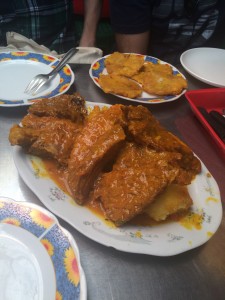
I asked the guide if he ever did vegetarian tours, and he said, “Welllll….” which I take to mean, “Not a chance.” Colombia likes meat, in general, despite lots of restaurants that cater to a vegetarian clientele. The history here is meat, and, as the guide informed us, fruit. Veggies, not so much, despite growing carrots the size of linebackers. But fruit, yes, and lots of juices (which I’ve mentioned before in this blog – juice is everywhere, and every kind, and delicious.)
That combination has a particular effect on the Colombian palate, I think. One is less likely to like hot food if one’s tastebuds are continually bathed in sweet and meat. And truth is, it’s not easy to find heavily seasoned food here. You can, however, eat a delicacy called lechona from a hollowed-out pig:

This common market site is another reason the vegetarian tour is probably a long way off.
Anyway, for foodies, this tour is indispensable. I learned things about Colombian food and eating and cooking that I’d not learned in three years of eating and cooking here. The guide was terrific and laid back, and we tried some of the city’s and the country’s specialties. My foodie friends loved it.
And for those of you who like flowers, you might love and you might hate this market. Some of the things they do to flowers in this country, in terms of dyeing, are reprehensible:

Those are real gerbera daisies, just dyed to within an inch of their lives. But other flowers are gorgeous, as anyone who knows anything about floristry can attest: Colombia is the hemisphere’s biggest exporter.


Herbs are also big at the market, because they are big among the public, in another thing I’ve talked about before in the blog: Agua Aromatica. It’s Colombia’s always-available, ever-variable alternative to a tea bag. Most any restaurant will offer their own mix of fruits and herbs stewed in hot water, some restaurants have a few to choose from, and they are luscious. In cooler months there are carts pushed ’round the city full of giant sprigs of a variety of herbs, to make agua aromatica on the go. On those carts they will also toss in a shot of aguardiente, for the doubly-warming effects of hot steamy fresh tea and liquor!
And this, to close the post because I just don’t have anything to add after this, is the egg store. It’s one of several stalls in the Paloquemao market dedicated to the little wonders. Fun fact: eggs are not refrigerated here. Why? Because they don’t have to be – as long as the protective film that comes from the hen is not washed off (as we do in the States.) So, King Soopers, take note!
